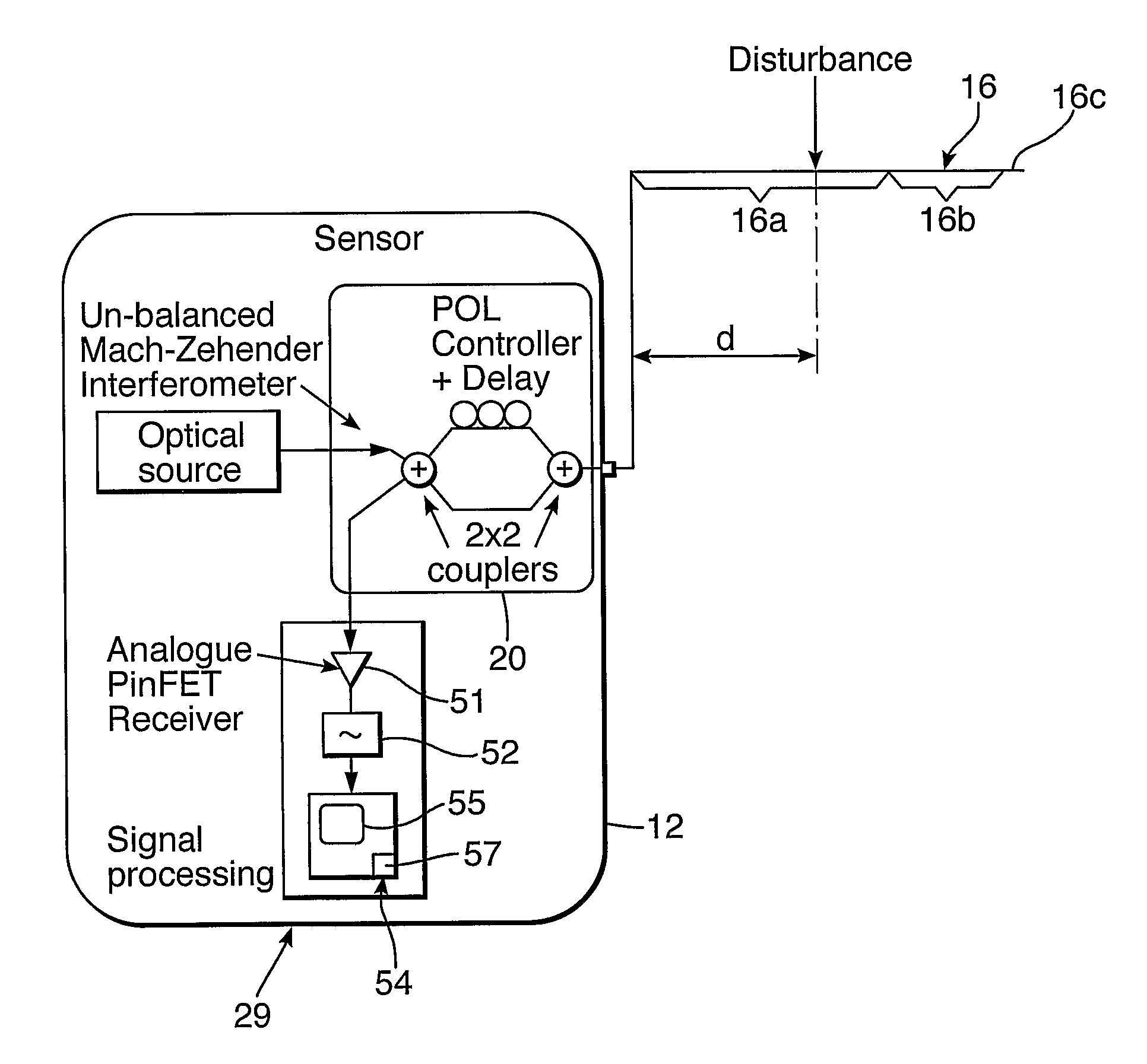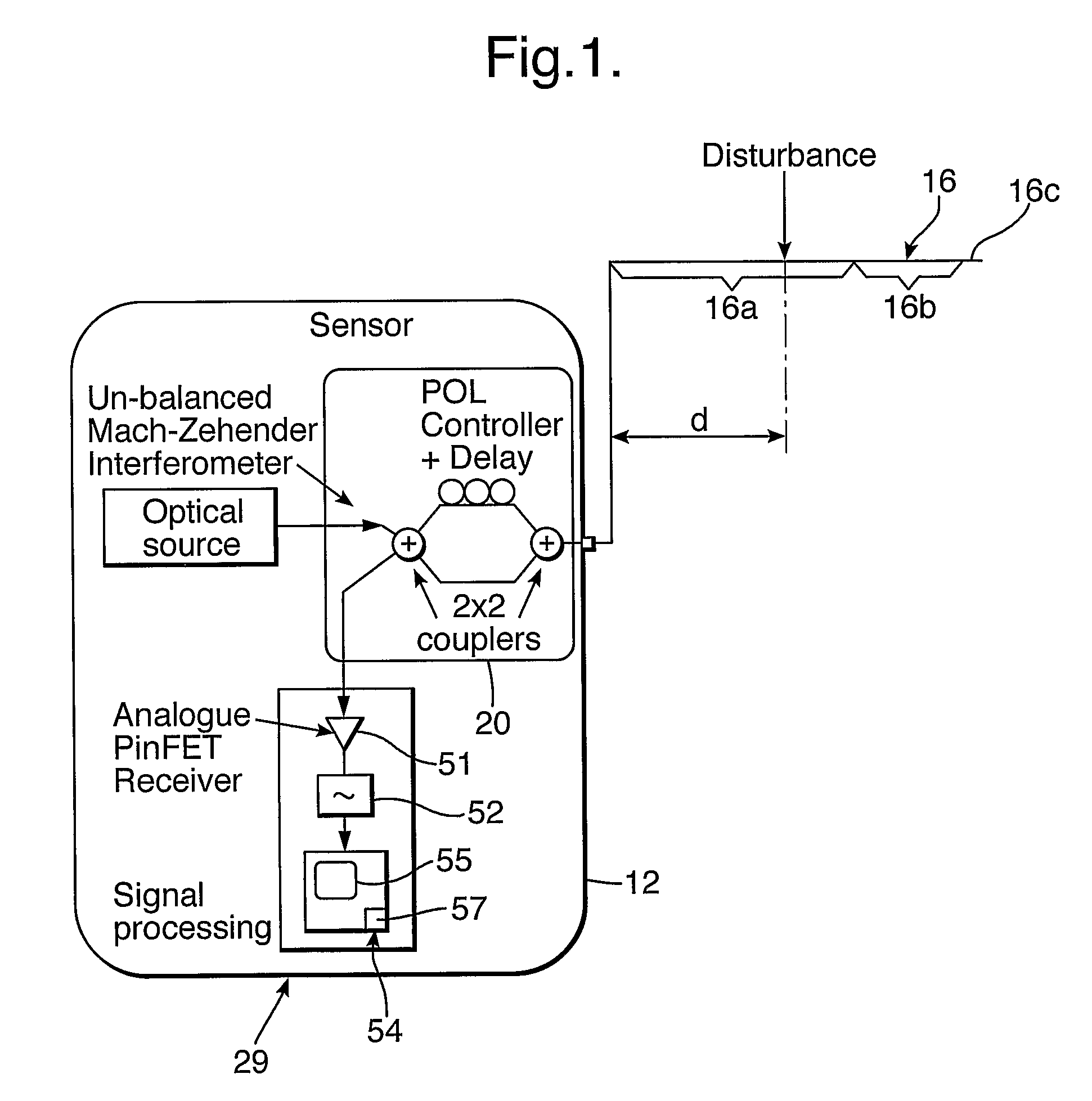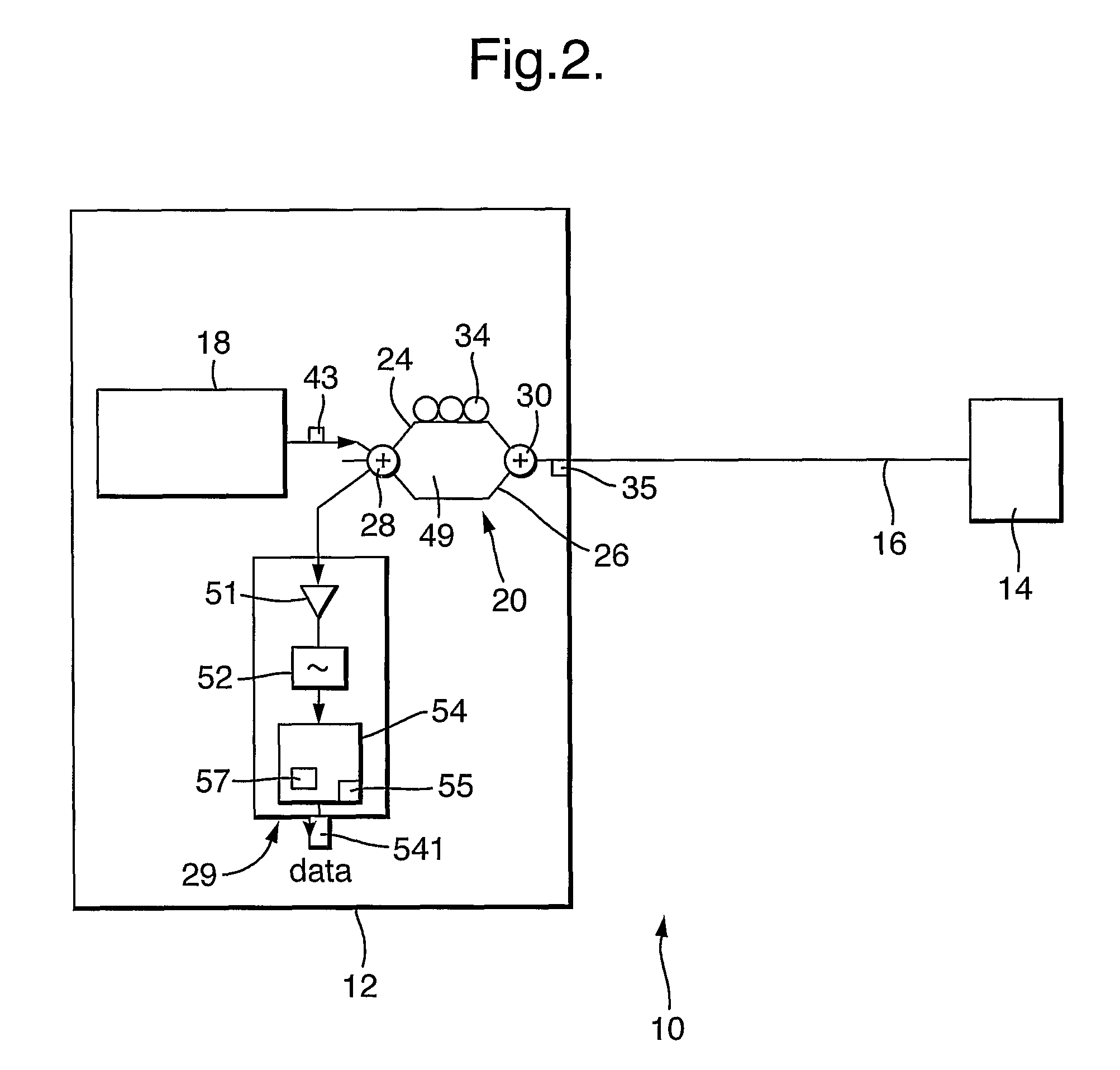Distributed backscattering
a backscattering and distribution technology, applied in the direction of instruments, optical apparatus testing, structural/machine measurement, etc., can solve the problem that inhomogeneities of comparable dimensions or larger than the wavelength may give rise to backscattering
- Summary
- Abstract
- Description
- Claims
- Application Information
AI Technical Summary
Benefits of technology
Problems solved by technology
Method used
Image
Examples
Embodiment Construction
[0024]Light from the optical source is split into two paths in the Mach-Zehender interferometer; one path is connected directly and one goes via an optical delay of several kilometres of standard fibre and polarisation scrambler. Thus the fibre under test conveys two copies of the source signal, one delayed by an amount “D” relative to the other. The source signals are backscattered in a continuous fashion as they propagate from the source along the fibre, the backscattered signals being returned towards the source after they have traveled through a portion of the fibre. For signals that had propagated beyond the disturbance point, the phase, polarisation and amplitude of the signals will be perturbed by the disturbance in both the forward and reverse directions of propagation. On returning to the interferometer the differential delay “D” is effectively un-done for one pair of propagating signals. Optical interference takes place at the 2×2 port coupler nearest the receiver creating...
PUM
 Login to View More
Login to View More Abstract
Description
Claims
Application Information
 Login to View More
Login to View More - R&D
- Intellectual Property
- Life Sciences
- Materials
- Tech Scout
- Unparalleled Data Quality
- Higher Quality Content
- 60% Fewer Hallucinations
Browse by: Latest US Patents, China's latest patents, Technical Efficacy Thesaurus, Application Domain, Technology Topic, Popular Technical Reports.
© 2025 PatSnap. All rights reserved.Legal|Privacy policy|Modern Slavery Act Transparency Statement|Sitemap|About US| Contact US: help@patsnap.com



